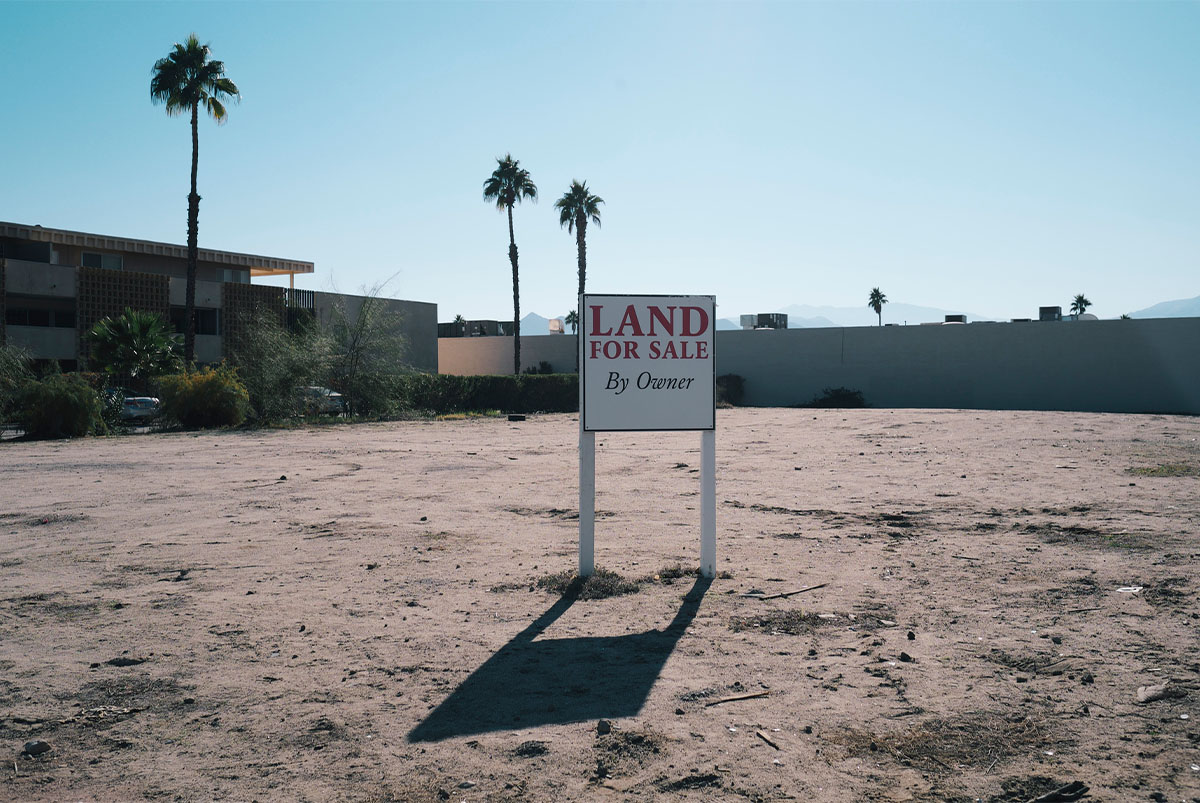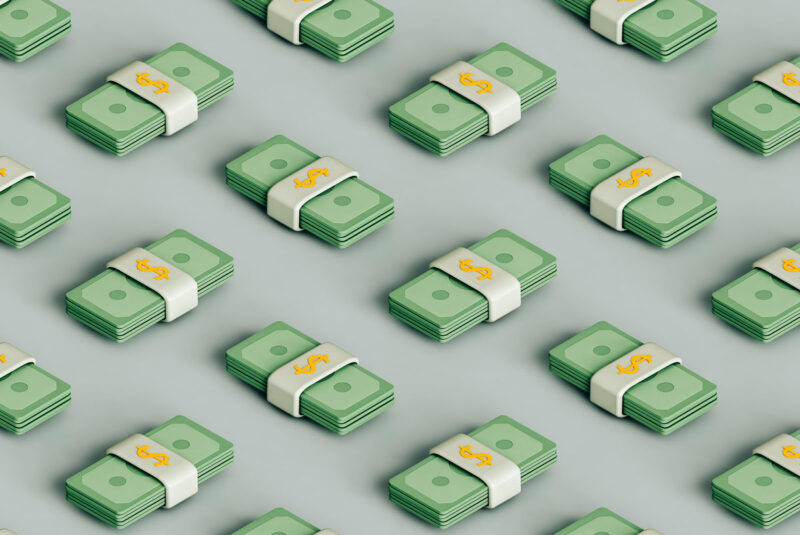Ready To Buy a Home?
Get Approved to Buy a Home
Rocket Mortgage® lets you get to house hunting sooner.
Investing in real estate can be a very lucrative endeavor. To generate a significant return on your investment – or fulfill other goals such as having a place to live – you will need to do your best to choose the right property.
One important factor to consider will be location. For example, property in midtown Manhattan might be considered thousands of times more valuable than property located off the grid. And in addition to a property’s location, you will also need to consider whether the property is developed or not.
Investing in undeveloped land can be appealing because land is a limited resource that will always be in demand. And if it’s discovered that the land can be put to good use (fertile soil, minerals, nearby development, etc.), the land’s value will climb.
To become a successful land investor, you should carefully consider the type of property you are purchasing. When you’re deciding which property is right for you, there will always be some degree of risk involved – which is why you shouldn’t jump at the first property you see or seems to be a good deal.
Our guide will walk you through the most important things you need to know to invest in undeveloped land, including how to find a parcel that meets your needs.
What Is Undeveloped Land?
Undeveloped land is often referred to as “raw land.” The exact definition can vary depending on who you ask, but undeveloped land usually refers to land that does not have any structures, infrastructure, land utilization or other types of human interference.
Some people might consider any land that includes minor features like a gravel driveway or a small shed to be undeveloped or mostly undeveloped. Land that is used for natural purposes, such as camping, hunting or fishing, might also be considered undeveloped.
If the land is being used for farming, grazing, mining or other extraction activities (operations that take resources out from the land), it would likely be considered developed, no matter how “out there” the land might feel.
If the land contains a major structure – especially if the structure has electricity, gas and running water – it would also be considered developed.
Whether you are working with the cheapest land in the U.S. or more expensive land, there are plenty of ways to make money from undeveloped land.
How Much Does It Cost To Build a House on Undeveloped Land?
If you live in a highly developed area, adding a structure (such as a small home) to an untouched parcel of land is usually pretty affordable. Depending on the size of the home and its features, you might be able to build a house for less than $50,000, though factors like local zoning laws might increase your costs.
If you live in a sparsely populated, undeveloped region, your costs can accumulate rapidly. The harder it is to get supplies to the building site, the more you will end up paying. If you decide to build a house 5 miles away from the nearest road, you’ll likely end up paying more in transportation expenses than you will in raw materials.
There are different ways to reach your build site, including simple strategies such as using a pack mule or more complex strategies such as transporting by helicopter. In both cases, however, your costs will continue to add up.
Another important factor to consider is infrastructure. If your property is off the grid, you will need to install water, gas and electricity pipelines. As you’d expect, this could cause your final expenses to skyrocket. That’s why it is important to develop a comprehensive building plan when you’re comparing different parcels of land.
The Pros and Cons of Buying Undeveloped Land
Contrary to the impression made by some popular HGTV shows, buying and developing undeveloped land is about more than the price of the land. With that in mind, let’s take a look at some of the pros and cons of buying undeveloped land:
Pros of buying undeveloped land
Some of the pros of buying undeveloped land include:
- Flexibility: There is a lot of undeveloped land out there. You can choose from a number of locations to find the parcel of land that works well for you.
- Low cost: When looking at factors such as total cost per acre, buying undeveloped land will almost always be the most affordable option. Just be sure to add in the costs of any future development.
- Low competition: The market for undeveloped land is usually less chaotic than the market for developed land. That means you are much less likely to end up in an expensive bidding war.
- Fewer maintenance costs: Until you develop the land, your monthly maintenance costs will be remarkably low, and in some cases – nonexistent. Additionally, undeveloped land usually has lower insurance costs and lower property taxes.
- Potential return on investment: Land will always be in demand. And it is a resource we cannot make more of. As the population continues to grow, demand for land will increase, putting you in a position to earn a significant ROI.
Cons of buying undeveloped land
You should also consider these drawbacks:
- Costs of permits: If you develop the land, you will likely need to secure several permits. In addition to construction permits, you may also need permits to lay your water and gas lines.
- Longer time: Because the land is undeveloped, the home you build on it should not be considered move-in ready. Depending on the state of the construction industry and your home’s construction timeline, it might be a year or more before you’ll be able to live on the property.
- Zoning restrictions: Different entities, including municipal, county, state and federal governments, may have restrictive zoning laws. If you want to use the land for farming, mining, hunting or development, you’ll need to confirm that it’s allowed.
- Larger down payment: It’s harder for lenders to use undeveloped land as mortgage leverage because it’s harder to sell, so you’ll likely be expected to make a higher down payment. The down payment for an undeveloped land mortgage is typically around 15% – 25%.
How To Buy Undeveloped Land
If you are still committed to investing in undeveloped land, keep these steps in mind:
Research the land
Think about what you want to do with the land. Someone planning to farm their land will have different needs than someone looking to build a cabin for weekend getaways.
Once you know how you plan to use the land, you can filter your search and narrow down your land options. If you can, it would also be a good idea to visit the land in person.
Conduct surveys and tests
Surveys are especially important for undeveloped land buyers. A good survey will outline which land you are allowed to access. It does not always match seemingly intuitive landmarks, such as a fence, a river or a road. The surveyor will also explain whether any easements apply to the land you are purchasing.
Soil tests and other environmental tests should be conducted to evaluate the quality of the land. This is a good idea even if you don’t plan on developing the land.
Get a land loan
Once you have picked the land you want to buy and have evaluated its feasibility, you’ll probably need to secure some sort of financing. Enter land loans (or raw land loans), which are used to purchase undeveloped land.
The application process is similar to securing a traditional mortgage, though variables such as your intended use of the land and other factors will likely play a larger role.
Exploring New Options
Investing in undeveloped land isn’t for everyone. There are plenty of people who would prefer to go with a more traditional option. But if you are willing to expand your comfort zone and explore additional options, investing in undeveloped land can provide a wide array of benefits.
If you have some money you’d like to invest in real estate, an undeveloped piece of property might be worth considering.
Take the first step toward buying a home.
Get approved. See what you qualify for. Start house hunting.
The Short Version
- When looking at factors such as total cost per acre, buying undeveloped land will almost always be the most affordable option
- Investing in undeveloped land can be appealing because land is a limited resource that will always be in demand
- If your property is off the grid, you will need to install water, gas and electricity pipelines




